#labour exploitation
Explore tagged Tumblr posts
Text
Book of the Day - Technofeudalism: What Killed Capitalism
Today’s Book of the Day is Technofeudalism: What Killed Capitalism by Yanis Varoufakis, written in 2023 and published by Vintage Publishing. Yanis Varoufakis is an economist, politician, and activist, former finance minister in Greece during the 2015 debt crisis. He has an academic background rooted in political economy and game theory. His work is filled with moral clarity, often absent in…

View On WordPress
#behavioural manipulation#book recommendation#book review#capitalism#data collection#Economics#fight capitalism#labour exploitation#politics#Raffaello Palandri#socialism#technofeudalism
7 notes
·
View notes
Text

0 notes
Text
#ag recruitment#united kingdom#indonesian migrant workers#foreign workers#employment#labour exploitation#indonesia
0 notes
Text
How hot is too hot to work? It is a question researchers have found the answer to here, in Cambodia's brick kilns, where people toil in some of the hottest working conditions in the world, fuelled in part by the scraps of fast fashion.
-
Special sensors recorded the core temperature of 30 workers at these kilns over a week and showed that they all had heat stress, or core temperatures of more than 38C. This can cause fatigue, dizziness, nausea and headaches.
A healthy body temperature usually ranges from 36.1C to 37.2C. Body temperature over 38C is symptomatic of a fever. Some workers had core temperatures of 40C, which can lead to heat stroke, resulting in convulsions, eventual loss of consciousness and even death, if not treated early.
One worker told researchers that he had suffered from heart failure due to the heat. But he eventually returned to work because this was the only way he knew to earn a living.
This is only made worse by a warming climate and Cambodia's own weather - last May it hit a new high with 41.6C during the hottest year on record. As global temperatures soar, even a small increase could mean the difference between life and death for the tens of thousands of brick kiln workers across Asia.
-
Outside the kiln, Kosal, a father of two, scoops up a mix of fabric, plastic and rubber that he shoves into the hatch before shutting it quickly. Black smoke seeps through the cracks as children - his and other kiln workers' - run past.
-
The children crawl over bags bulging with clothing offcuts - more fuel for the kiln from Cambodia's $6bn garment industry.
But what may initially appear a solution to the unwanted scraps of the country's 1,300 garment factories is actually hiding its own deadly secret.
According to a 2018 report - Blood Bricks - by UK academics at Royal Holloway, these scraps have traces of chlorine bleach, formaldehyde and ammonia, as well as heavy metals, PVC and resins used in the dyeing and printing processes. The report also found that brick factory workers reported regular migraines, nosebleeds and other illnesses.
-
Cambodia's brick kilns have long been accused of unsafe and unfair working conditions - and they employ some of the world's poorest people. Now, climate change is only exacerbating those inequalities, experts say.
"What we need to do is to consider how climate change impacts people through the lens of labour and inequality, and recognise that labour exploitation is a major factor in the worst impacts of climate change," Mr Laurie said.
-
The majority of those who work in Cambodia's brick kilns were farmers. ... But sparse rainfall in recent years has made it difficult to manage a single harvest.
-
More than two million of Cambodia's 10 million adults have outstanding micro-loans, according to the Cambodian Microfinance Association. On average, they each owe $3,320 (£1,955).
This financial insecurity has supplied the vulnerable labour for brick kilns. Owners offer to pay off the loan but, in return, the worker is bonded to the kiln.
Often whole families are bonded to the kiln. The BBC saw children helping their parents in the kiln despite efforts by the Cambodian government to prevent child labour.
"If we leave, we are afraid of being arrested and imprisoned," Chantrea says. "So we must struggle here. If they ask us to enter the fire, we will do even that just so we can earn more money for food and to pay off our debt."
1 note
·
View note
Text
so many twists in this show but my new favourite is them setting cobel up as such a complete and utter freak for a season and a half only for this episode to reveal she's actually SHOCKINGLY WELL ADJUSTED for what she's been through
#ether at eight years old is FUCKING CRAZY are you KIDDING ME#like that alone. but it's ether at and BEFORE eight years old#PLUS child labour in the ether factory#PLUS her mother dying while she was being child labour schooled and not getting to say goodbye#PLUS getting credit stolen for the MEDICALLY PROCEDURE SHE INVENTED so that the cycle of gross exploitation could devolve even further#like. im surprised she just gets angry and drives like a lunatic#girl should have warrants out for her arrest. for triple homicide. instead she just got fired from torment nexus inc.#severance#severance spoilers#harmony cobel
460 notes
·
View notes
Text
Fast fashion is killing us and the planet
Shein: Fast-fashion workers paid 3p per garment for 18-hour days, undercover filming in China reveals
It is the biggest fast-fashion company in the world, making billions of pounds by unveiling thousands of new designs on its addictive website every day and selling them cheaper than anyone else. Now the first undercover investigation into factories supplying Shein, the Chinese retailer loved by millions of young women in the UK and around the globe, has exposed the disturbing experiences of workers making its clothes. Garment manufacturers in China are often working up to 18 hours a day, being paid as little as 3p per item, with no weekends and only one day off per month, a Channel 4 team has found.
This treatment of workers – who are fined two thirds of their daily wage if they make a single mistake – breaks not only Shein’s code of conduct for suppliers but also Chinese labour laws. The company says it will investigate. A woman using the false name of Mei secretly filmed inside two factories where she took on jobs producing the kinds of tops that British shoppers can buy for as little as £1.49. The footage has been shared with i ahead of Untold: Inside the Shein Machine, streaming on All4 from Monday. Women in one factory are found to be washing their hair during their lunch breaks, as they have so little spare time outside of their long shifts. A man who started work at 8am, but is filmed sitting shirtless at his sewing machine after midnight, says he will not finish until 2am or 3am because he needs to complete his batch
Woods says Shein is “head and shoulders” above other fashion brands in the number of “dark patterns” it uses online. “These are behaviours on the website that force you into actions that you might not choose yourself,” he explains. “Data is making marketing like a loaded weapon.” Shein was contacted for comment by the documentary makers but did not respond on this matter. Data published on 6 April by The Business of Fashion showed that in the year to date, Shein had launched 314,877 separate designs in the US market, compared to 18,343 in the same period by Boohoo. This relentless onslaught suggests customers have more than 3,000 new styles to potentially view every day
The contact arranged for “Mei”, one of the journalists in his network, to infiltrate the Shein supply chain in Guangzhou, a south-eastern city with a population of 14 million. Having seen what she discovered, he says: “I have been doing investigative stories in China for 15, 16 years – still [they] exploit workers like dogs. Basically it’s worse than years ago.”
1K notes
·
View notes
Note
Do you think that low birth-rates are a problem?
I think they're the opposite of a problem :)
#signs of women's freedom of choice#and it means women are more free to do what they want and they aren't being in life-threatening labour situations as much!#and less children are being born into this dystopian capitalistic climate crisis#less suffering is introduced to the world#capitalism gains less if there's less people to exploit#it's all win for me#lets get those low birth rates near zero#finally human life could become valuable#wars could stop#honestly all good things happen when women are able to choose their own lives#i love it#i saw a video today saying fast fashion is starting to crumble#feeling very optimistic :)))))))
169 notes
·
View notes
Text
Made in the USA: Wage Theft, Fraud and Hidden Sweatshops
Unrolled twitter thread by derek guy (@dieworkwear)
4 Oct 24 • Read on X
ALT enabled on all images. Video has closed captions but is not transcribed.
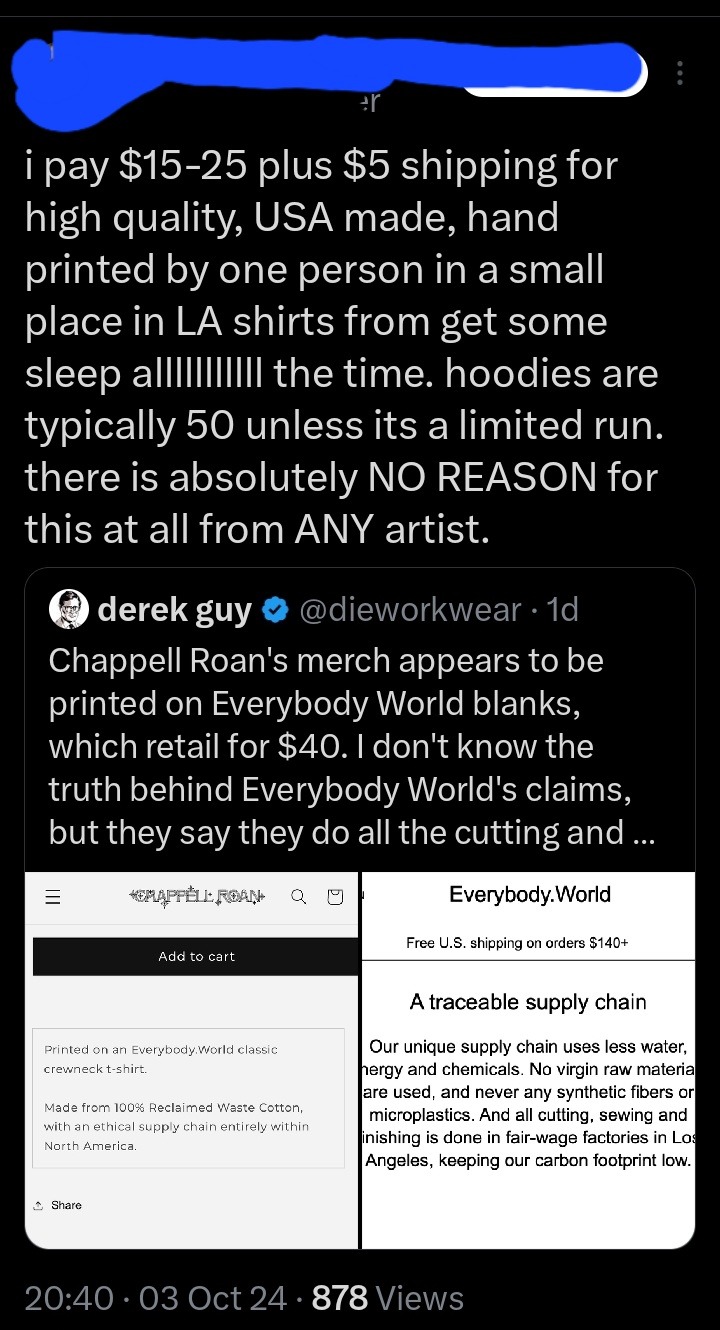
Not trying to create a pile-on here. But let's talk about why something might still be made in unethical conditions even though it bears a "made in USA" tag. 🧵
The first thing to understand is that not all workers are covered by US labor laws. You might assume that workers get paid a minimum wage (after all, it says "minimum"). In fact, many garment workers in the US toil under what's known as the piecework system.
Piecework means you get paid not by the amount of time you work but the number of operations you complete. This system should be familiar to many of you. As a writer, I get paid per word. The pay is the same whether it takes me 100 or 10 hours to write a 1,000 word article.
My situation is fine bc I get paid enough to eat. But for a garment worker, the pay structure can be peanuts: three cents to sew a zipper or sleeve, five cents for a collar, and seven cents to prepare the top part of a skirt. These are real numbers for LA-based garment workers.
Piecework is how companies skirt minimum wage laws. Among labor organizers, the term "wage theft" refers to the difference between what a worker should have earned under min wage laws and what they actually earned through the piece rate system.
This system is incredibly common. A 2016 UCLA Labor Center study showed the median piece-rate worker in Los Angeles scrapes together $5.15 per hour—less than half the state’s mandated minimum wage. Labor conditions are also very bad: poor ventilation, dusty air, rats and mice.
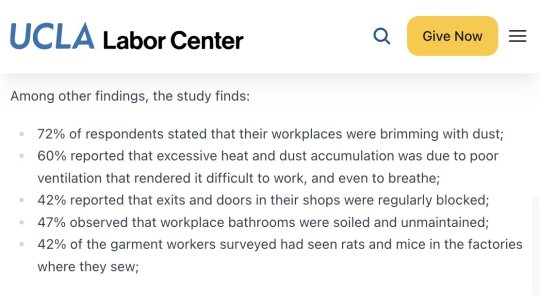
A Federal Department of Labor investigation the same year found that 85 percent of Los Angeles garment factories were breaking labor laws. In 2016, these violations amounted to $1.3 million in back wages owed to 865 workers in a sample of 77 factories. This is wage theft.
In 2021, labor organizers won a fight to get piecework banned in California. But two years later, it's still incredibly common. I interviewed an LA-based garment worker who toils 12 hrs a day for $50. She sleeps in the corner of a kitchen. From my article in The Nation:
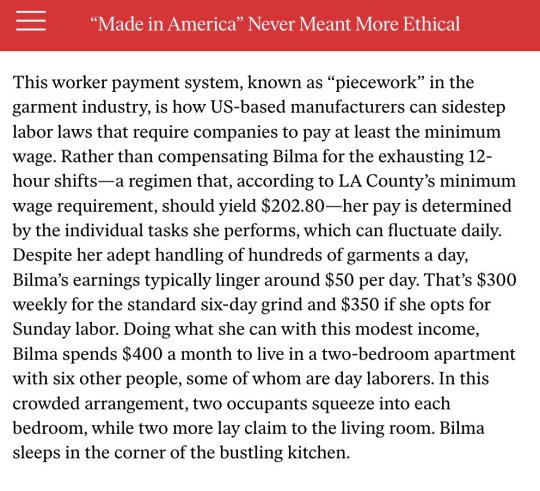
Currently, there's a new fight get piecework banned nationwide through the FABRC Act. I would link, but Twitter throttles threads that have outbound links, so I would prefer if you Google how you can support this legislation. Or follow @GarmentWorkerLA for more info.
The other reason why a "made in USA" tag may not mean much has to do with how the label is applied.
When you see this label inside your garment, what do you assume? Think about this before moving on to the next tweet.
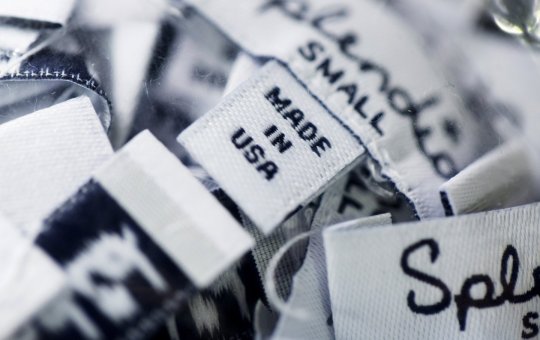
The Federal Trade Commission has pretty strict rules on who gets to apply that label. For clothes, the item has to be cut and sewn in the US using materials that were made in the US. The FTC tries to match its rules with the common understanding of what "made in US" means.
If you're a giant company like Levi's or LL Bean, you may have lawyers who are advising you on these rules. This is why you see labels like "imported," which means the item was made abroad. Or "made in the US from imported materials" when they can't meet the MiUSA standard.
But it's incredibly common for companies to violate FTC rules. In 2022, the FTC fined the pro-Trump brand Lions Not Sheep $211k for labeling their t-shirts "made in USA" when the shirts were actually imported from China and other countries.
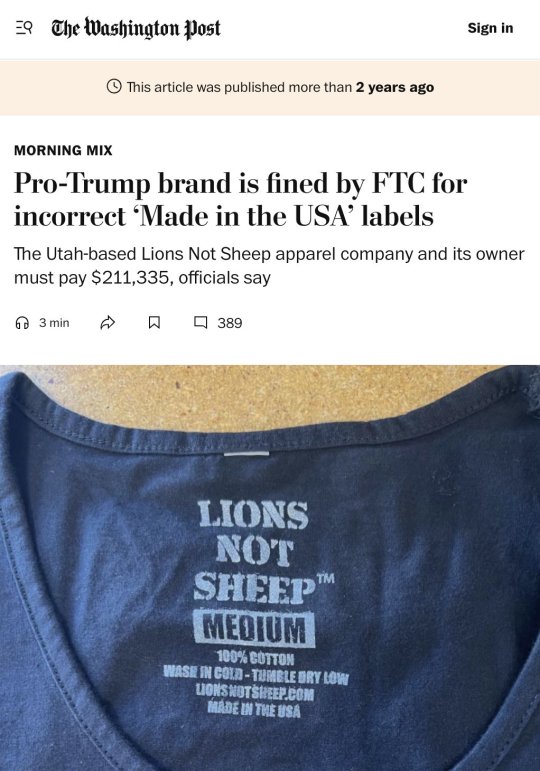
The company was basically importing blanks from China, ripping out the "made in China" label, screen printing the shirt in the US, and then applying a new screen-printed "made in US" label. CEO Sean Whalen claimed he was being persecuted for his pro-Trump views.
But the whole thing started bc Whalen made a video about how his customers are price sensitive, so he imports blanks from China. That's what kicked off the FTC investigation. So while this mislabeling is common, it's hard to get caught unless you make a video about your crimes.
The truth is that making a t-shirt in the USA according to FTC standards will result in a relatively expensive garment. Heddels and Velva Sheen both produce shirts in the US from US grown cotton. The first is $26; second is $90 for a two-pack.
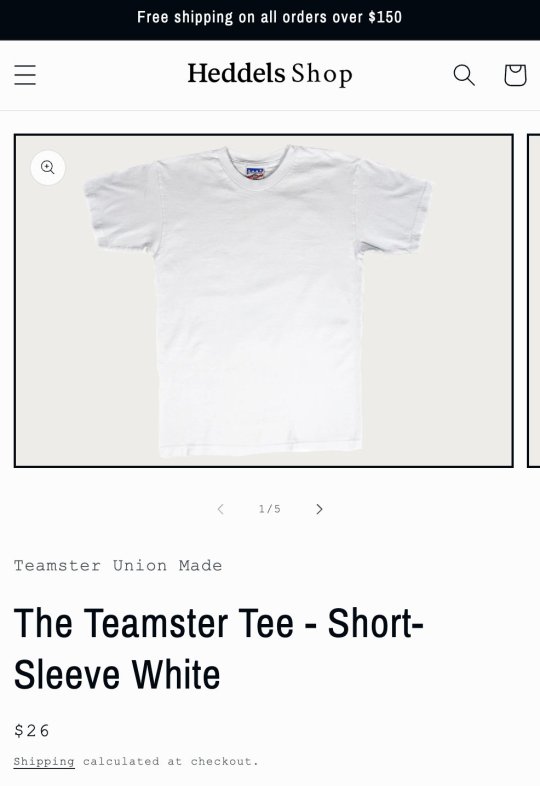
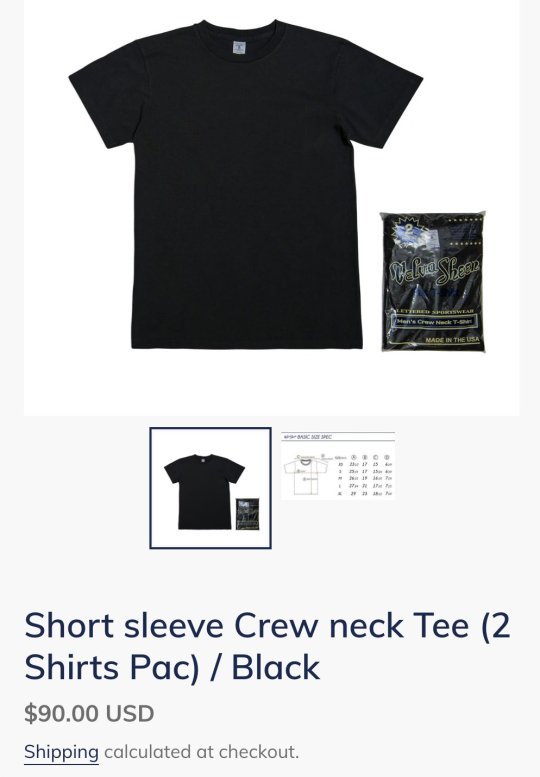
Once you add things such as screenprinting—or if you want a more unique cut and not just basic blanks—the costs go up. This is why Bikers for Trump sourced their merch from Haiti. They knew their customers would not pay an extra $8 for true made-in-USA production.
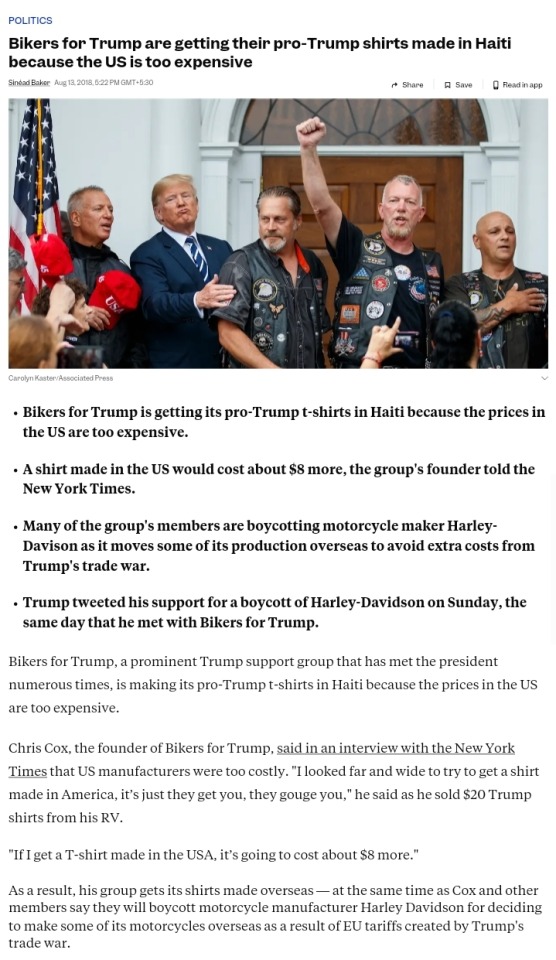
Today, there are countless companies that make merch for other organizations. They source their t-shirts from a variety of places—some made in the US, most not—and then screenprint a design and fulfill orders. This way, the other org doesn't have to do any work but marketing.
When you see a screenprinted t-shirt for $20, ask yourself: Where was the material grown? Where were the yarns spun? Where was the cutting, sewing, and finishing performed? Where was the screenprinted done? What were the wages and labor conditions along these steps?
I'm not a nationalist, so I don't prioritize American jobs over foreign ones. But I do care about fair wages and labor protections. Just because something was made abroad doesn't mean it was made in a sweatshop. Just because it was made in the US doesn't mean fair wages.

Paying more for a garment is also no guarantee of ethical manufacturing. But when the price of a garment is so low, you leave little on the table for workers. Just because you see a $20 t-shirt that says "made in USA" doesn't mean it was made fairly.
Please don't harass the person who posted that original tweet. My intention is not to cause harm or stress for anyone. Only to help shed light on what goes into garment manufacturing, fair labor, and labeling. Hopefully, you will consider these issues when shopping.
For the inevitable question: "How do I make sure my clothes were made ethically?" This is very difficult to answer in a thread. My simplest answer is that we should elect pro-worker politicians, fight for pro-labor laws, and empower unions so workers can advocate for themselves.
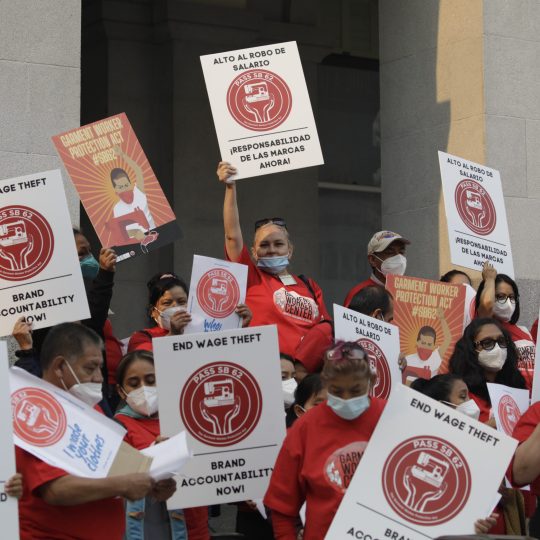
--------------------End----------------------
TL; DR: Doesn't matter if it's the US, if it's not union it's probably a sweatshop. And not all merch is priced high because of fair labour conditions (looking at Taylor Swift and Beyoncé). Look for supply chain transparency.
#sweatshops#fashion#american sweatshop#chappell roan merch#sweatshirt#chappell roan#merchandise#made in usa#garment industry#fast fashion#worker rights#labour rights#labour unions#capitalism#worker exploitation#us politics#us law#knee of huss
134 notes
·
View notes
Text
I’m very happy and proud of Ayo for the Emmy nomination, but how the heck is Sydney Adamu still a supporting character? Syd is one of the main characters of The Bear, through and through.

#they did the same (not the emmys lol) with janelle monáe for glass onion#i was like supporting actress where?!!#a supporting actress doesn’t play literal twins and then prepares to play one twin pretending to be the other#honey do you know how much effing work that is??!! it's main lead work#i hope this type of nonsense being pulled on black actresses was also part of the sag-aftra negotiations#glass onion#glass onion spoilers#labour exploitation#ayo edebiri#the bear#emmys
61 notes
·
View notes
Text

Excerpt from 'Road of Bones' by Jacob Aue Sobol
Running 2031 km from Yakutsk to Magadan, the “Kolyma Highway” has a dark past. With untold numbers of Gulag prisoners buried beneath the highway, the “Road of Bones” continues to claim new lives every year. In literally one of the coldest parts of the inhabited world, the Kolyma region’s residents seem to exist in pure defiance – it is this way of life, these people surviving under extreme conditions in the shadow of a gruesome history, that I wish to engage with and portray.
From 1932 to 1953, millions of victims of the Soviet repression were sent to forced labor camps in Siberia. 80 of Stalin’s Gulag camps were established in the Kolyma region alone holding a mixture of ordinary criminals and political prisoners from all over Europe. One of the largest Gulag operations was the construction of the 2031-km-long “Kolyma Highway”. Built by prisoners who were literally worked to death, it connected Magadan with the mountainous interior, opening up the region to gold mining while at the same time connecting it to the outside world.
Untold numbers died constructing the highway across the frozen ground. Buried where they fell, the prisoners’ corpses were often incorporated into the foundation of the road to protect it from the permafrost, giving the road its most common nickname: Road of Bones. Prisoners said that there was one body for each tree cut down to clear the forest...
+ images/further reading: https://phmuseum.com/projects/road-of-bones-1
#Jacob Aue Sobol#Road of Bones#photobook#Kolyma Highway#Gulag#Gulag labor#russia#russian history#stalin#extortion#exploitation#labour camps#kolyma: land of gold and gulags
27 notes
·
View notes
Text
‘Liberation Day’ Is Looking More Like a Disaster
youtube
#youtube#child labor#child labour#child labor laws#florida#tarrifs#labor#labor laws#capitalism#liberation day#child exploitation#child endangerment#political#us politics#politics#us news#usa news#news#fuck the gop#fuck trump#fuck donald trump#protect the children#fuck jd vance#fuck elongated muskrat#fuck elon#fuck elon musk#fuck elon and trump#child abuse
20 notes
·
View notes
Text
the “missing the point” meme except it’s for the Interstella 5555 rerelease, and the point being missed is “of course the notoriously shambolic anime industry is using AI to upscale a film; Daft Punk were almost certainly unaware (or, at the very least, unable to do anything about it); none of this would be surprising if you were paying attention to the actual issues with AI and labour” in favour of “I can’t believe Daft Punk would use AI :(“
#Daft Punk#Interstella 5555#discourse of the fandom variety#yes obviously the (alleged) use of AI in restoring the film is bad for multiple reasons#but people have *got* to stop acting like Daft Punk themselves used the AI#when realistically I wouldn’t be surprised if they weren’t made aware of it at all#(and tbh I wouldn’t be surprised if they didn’t know the obvious-to-us signs of AI use)#TL:DR: you should be getting angry about the exploitation of labour in the anime industry#not blaming DaPu for something they—again—might not have known about#text heavy
36 notes
·
View notes
Text
Harrods refuses to engage with the workers or the United Voices of Labour union representing them. The company has been in the spotlight over serious allegations of rape and sexual abuse against its former owner, Mohammed Al Fayed.
https://freedomnews.org.uk/2024/12/04/harrods-workers-vote-for-xmas-strike/
#harrods#human rights#class war#United Voices of Labour#union strong#support unions#labor unions#pro union#union#Mohammed Al Fayed#ausgov#politas#auspol#tasgov#taspol#australia#fuck neoliberals#neoliberal capitalism#anthony albanese#albanese government#antinazi#antizionist#eat the rich#eat the fucking rich#antimilitarism#anti military#anti war#anti capitalism#antifascist#exploitation
43 notes
·
View notes
Text
25.11.2023
Yesterday, a plane from Israel arrived in Lilongwe to pick up over 200 young Malawians who have since arrived in Israel today. In Israel, the young Malawians are expected to be working in farms where they will be receiving about US$8 per hour. However, in the first four months, the Malawians will be repaying the money used to take them to Israel. According to a document Malawi24 has seen, they will be paying debt US$301 per month and air ticket debt of US$150. Employers will also be deducting US$150 housing allowances and US$34 medical insurance from the employees’ salaries.
1 note
·
View note
Text

No thoughts on AI as such, but I wonder if it would be a surprise to this user to find out that the introduction of complex machinery into manufacturing/industry resulted in the exploitation of a larger subsection of the population, as many more people could now work in certain industries (who couldn’t before) due to machinery making it viable eg more women and child wage-labourers.
My point being that machinery, the technological innovation of the time, could have been used to make workers lives easier under a non-capitalist model, but that didn’t happen because capitalism must have growth and must realise profit. And you can’t do that without the surplus labour of workers. Anyway.
#exploitation here used in the marxian sense#I’m not trying to say women working for a wage is evil#the condition of workers having nothing to sell but their labour for the profit of the minority is evil#moth.txt
25 notes
·
View notes
Text
Andrew Ryan did not become a parasite HE WAS ALWAYS A PARASITE!!! BY HIS OWN DEFINITION!!!! HE WAS ALWAYS A PARASITE!!!!!
#he exclusively profits off of the labour of others. that is HOW he became as wealthy as he is#and everything he does is exploitative of the people around him#like beyond even business. just look at diane#bioshock#andrew ryan
13 notes
·
View notes